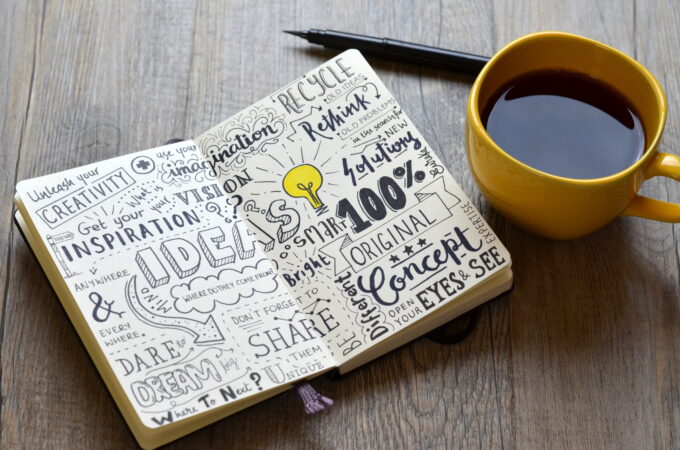
Connecting culture to burnout: The role of compulsive workaholism
An important step to improving workplace well-being is a better understanding of what drives us to over-work ...

by Bonnie Hayden Cheng , Alyson Meister Published 30 June 2023 in Management • 9 min read
Are you as intentional about your work breaks as you are about your work? Most people would say no, as typically, while striving for efficiency and productivity in scheduling back-to-back meetings, people tend to take mindless or aimless breaks. But it’s important to be deliberate with your work breaks. If not, you’re missing out on a key opportunity to maximize your energy levels. In thinking about intentionally crafting your break strategy for energy management, here’s what you need to know to get the best from your breaks.
The demands of daily work – even when you love it – require exertion of your limited and effortful resources, such as attention and focus. Much like a battery that is depleted with use, these demands drain your emotional, mental, and physical energy throughout the workday. Without opportunities to rest and recover, symptoms of chronic stress accumulate, which results in lowered well-being, poor performance, and, over time, burnout. The key then, to rebuilding and replenishing your energy, focus, and attention over time is to develop a deliberate and proactive work break strategy.
Work breaks – from vacations, to weekends, to lunch and coffee breaks during the day, breaks are opportunities to engage in various activities to rest, recover, and re-energize ourselves. While greater consideration is usually paid to planning longer breaks such as holidays, we are often less intentional about our workday breaks, overlooking them or even skipping them altogether. This is a missed opportunity, as short breaks – or “micro-breaks” – are important for resource generation, energy, well-being, and performance. And if you regularly finish work feeling grumpy and exhausted, this is a tell-tale sign that your daily micro-break strategy needs some attention.
While it may seem intuitive that we should take breaks when we need them, the recovery paradox tells us that’s not actually the case. Those who are the most stressed are actually least likely and able to take recovery breaks, and end up pushing themselves to work even harder, sparking a vicious cycle of stress and depletion.
Work breaks – from vacations, to weekends, to lunch and coffee breaks during the day, breaks are opportunities to engage in various activities to rest, recover, and re-energize ourselves.
Drawing on scientific studies of work breaks, we offer several factors to consider when devising an intentional work break strategy, elements of which influence whether your break will be effective in supporting daily energy recovery and well-being. As you read through these, consider how you might shape and refine your own break strategy.
Simply put, who decides when, where, and how you will have a break? Do you have agency in the decision or does your employer schedule and even legally mandate your breaks (e.g., regulated and timed lunch breaks)? Many organizations schedule business lunches or team building activities during lunch that may not be conducive for recovery. The more agency you have, the more effective your break will be, provided you have some self-awareness of when you need them (given the recovery paradox). Of course, there may be instances where these overlap, such as when employees choose to work over their lunch break.
Research suggests that, in general, employees tend to take around 15 minutes for a work break when they choose their own break schedule. Research tends to show that taking longer breaks (e.g., lunch break) or frequent short breaks (e.g., several 10-minute breaks) is most beneficial to physical and mental recovery. This means that when you’re pressed for time, such as on days with back-to-back meetings scheduled, aim for several micro-breaks of just 10 minutes. You might strategically end meetings 10 minutes earlier (and attendees will thank you for it!) or build in a 10-minute block between meetings to ensure you’re getting proper rest. The effectiveness of your breaks for recovery, however, depends highly on factors such as your level of stress, as well as what you do – or don’t do – on your breaks.
Understandably, some days you only have time for a five-minute break if you’re lucky. Other days you might be able to squeeze in a longer one. Regardless, you can still optimize your energy and recovery by using your break time wisely. No matter what activity you engage in on your break, recovering energy depends on the particular recovery experience underlying the activity. Here are five experiences that have been shown to be most effective:
During some breaks, you may engage in small talk with colleagues, and on others, you may avoid any interaction and recharge by listening to your favorite podcast. No matter the activity, ensure that you are mentally detaching from thoughts of work to give your brain a break. Termed “psychological detachment”, this experience is a key strategy you can intentionally incorporate into your break plan. One way to mentally unplug is by taking a quick nap, as even a short 15-minute nap can boost recovery. This may be particularly important for shift workers, who typically suffer from sleep deprivation and lower well-being and performance.

A word of caution: Research suggests that there is an optimal level of detachment, as too little detachment means you are overly attached to work and ruminating unproductively. Too much detachment is detrimental for performance and proactivity at work, as it may require more resources to transition back to work mode. An effective break strategy requires maintaining a psychologically healthy level of detachment that manages psychological boundaries.
We may be more accustomed to finding meaningful work, but how often do you find meaning in your work break activities? Research suggests that pursuing activities and experiences on your break that are important, valuable, and purposeful is one sure fire way to enhance the effectiveness of your work breaks. One way to do that is to pursue “mastery experiences” that entail learning and challenge, such as through developmental hobbies, intense physical training, activities that are intellectually stimulating, or even spiritual pursuits.
It’s no secret that positive social interaction builds critical resources around social support. In fact, quality social experiences are one of the strongest factors identified in research, and one of the key indicators of an engaged workplace is whether you have a best friend at work. When it comes to socializing, it matters who you socialize with, and when . For example, lunch with the boss can give you an immediate boost in energy but leave you depleted by the end of the workday. Recall the importance of break autonomy – feeling like you “have to” socialize during breaks is detrimental for daily fatigue and wellbeing. Another point to consider is the topic of conversation. Continuing to talk about work during a work break contributes to a drain in resources, due to a lack of opportunity to psychologically detach from work and impeding recovery. So, next time you’re having lunch with colleagues, try to talk about something non-work-related.

“We may be more accustomed to finding meaningful work, but how often do you find meaning in your work break activities? ”
A word of caution: In a tech-forward world, we often equate socializing with online forms of communication. Unsurprisingly, social media is the most common work break activity, with one study showing nearly 97% of employees spending their breaks (and work time!) scrolling their feeds. Employees typically spend, on average, 4.54 minutes per hour on non-work related “social media breaks” which may not seem like a lot but adds up over the course of a workday. Social media breaks, though, are a double-edged sword. While they can promote work-life balance and, counterintuitively, promote work engagement, they can also reduce creativity. In general, those choosing to spend work breaks on their smartphones tend to experience emotional exhaustion. If you desire to engage with social media during your break, try to keep it short so you can replenish your resources through other more effective, more meaningful, ways.
While mentally unplugging is a vital component of an effective break, our brain tends to default to ruminating, particularly on negative events and interactions. If this sounds familiar, to counteract this habit, be strategic in using your break time to reflect positively. Research shows that this experience, termed “problem-solving pondering”, may contribute to employee engagement. To harness this, you could engage in a reflected best self exercise that encourages a strong focus on your strengths. You might also subvert the default by engaging in a short gratitude reflection, immersing yourself in the joy of positive events, or by simply taking 10 minutes to journal or write about your experiences, which can be a powerful exercise to reduce stress.
The paradox of work and health is that the very nature of our work disconnects us from the outdoors, yet research demonstrates that time spent with nature helps our well-being and ability to flourish. One study found a daily 10-minute outdoor work break was not only feasible, practical, and worthwhile, but also served to significantly reduce stress. No access to the outdoors? Visualizing or viewing images of natural landscapes has been demonstrated to have positive effects on physiological relaxing, supporting better recovery.

Note that these experiences are not mutually exclusive, which opens up opportunities for combining multiple activities during a workday break. One executive of a multinational financial services firm describes overhauling the design of meetings with her direct reports to include outdoor walking meetings that allow for the benefits of incorporating nature into self-care while also allowing extra time post-meeting to connect with her individual reports on a deeper, more meaningful level beyond the job itself. Indeed, initial research suggests cumulative benefits that accrue from using a combination of activities during breaks.
Developing an optimal break strategy is an individual endeavor, but managers play a pivotal supporting role in promoting and sustaining employee health and wellbeing and need to take an active role in workplace energy management. This starts with your own self-awareness and commitment as a role model demonstrating appropriate practices for your people – what you do both influences and sets the standard for others. If you do not take or encourage breaks or allow yourself to become depleted and exhausted day in and day out, your employees are likely to follow suit. Further, the more depleted you are, the more likely you are to engage in poor – or even toxic – leadershiptoxic – leadership practices, establishing a high-stress work culture that inhibits recovery.
Second, empower your people to decide when to take breaks and how to use their break time. Your encouragement carries weight – having the support of supervisors amplifies the positive effect of micro-breaks on recovery and wellbeing. To counteract the recovery paradox, provide training on effective recovery strategies, support recovery by institutionalizing policies that protect employees’ down time, and actively discuss and celebrate employees who effectively harness the power of breaks. Remember to be careful of a backlash effect in forcing people to take breaks when they are autonomously choosing to continue working, and the danger of asking employees to participate in ‘team building’ or other activities you might find enjoyable on their break time. Additionally, if possible, offer access to light, green space, and nature where employees can take their micro-breaks outdoors, which can help boost effectiveness of their recovery.

Breaks are not one-size-fits all. The extent to which your work breaks match your preferences and needs means energy, well-being, and performance benefits follow. So, make your break work for you. Make it a conscious goal to be intentional with your break strategy – here’s to a better break!

Associate professor of management and strategy and MBA Program Director at HKU Business School, University of Hong Kong
Bonnie Hayden Cheng is an associate professor of management and strategy and MBA Program Director at HKU Business School, University of Hong Kong. She is Chief Resilience Officer at Human at Work and a scientific advisor to OneMind at Work. She works with senior executives of organizations ranging from startups to Fortune 500 companies, transforming corporate cultures by incorporating wellness into their business strategy.

Professor of Leadership and Organizational Behavior at IMD
Alyson Meister is Professor of Leadership and Organizational Behavior and Director of the Future Leaders program at IMD Business School. Specializing in the development of globally oriented, adaptive, and inclusive organizations, she has worked with executives, teams, and organizations from professional services to industrial goods and technology. She also serves as co-chair of One Mind at Work’s Scientific Advisory Committee, with a focus on advancing mental health in the workplace. Follow her on Twitter: @alymeister.

22 July 2024 • by Nele Dael, Alyson Meister in Human Resources
An important step to improving workplace well-being is a better understanding of what drives us to over-work ...

25 June 2024 • by Susan Goldsworthy in Human Resources
Growing numbers of executives are stuck in survival mode – and risking exhaustion. IMD’s Susan Goldsworthy reflects on how CHROs can work with senior leaders to change behaviors ...

4 June 2024 • by Josefine van Zanten in Human Resources
Artificial intelligence has a significant role to play in improving DE&I, but leaders can’t rely on it to solve all their diversity and inclusion challenges — especially when it comes to supporting...

27 May 2024 • by Alyson Meister, Nele Dael in Human Resources
Boosting your employees' mental health isn't just good for them and the people around them – it has a demonstrable impact on the bottom line. Here's how the landscape is shaping up....
Explore first person business intelligence from top minds curated for a global executive audience